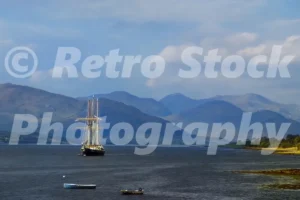Loch Eil is a serene sea loch nestled in the western Highlands of Scotland, just west of Fort William. Less celebrated than its larger neighbour Loch Linnhe, Loch Eil offers visitors a quieter and more intimate experience of the Highland landscape, with dramatic mountain scenery, rich history, and a strong connection to Scotland’s industrial and cultural past.
Geography and Setting
Loch Eil (sometimes spelled Lochiel) stretches approximately 10 miles (16 km) westward from Fort William, narrowing as it reaches the small village of Glenfinnan at its head. Though technically a sea loch—meaning it’s connected to the sea and influenced by tides—Loch Eil feels more like an inland loch, with calm waters often reflecting the surrounding hills and forests.
The loch is framed by rugged terrain on all sides, with the slopes of Ben Nevis and the surrounding mountains providing a dramatic backdrop. The West Highland Railway runs along the north shore of Loch Eil, and it was once a vital link for communities and industry in the region.
Historical Significance
Loch Eil is closely associated with Clan Cameron, one of the oldest and most influential Highland clans. The clan seat, Achnacarry Castle, is situated a short distance from the loch near the River Arkaig. The chief of Clan Cameron has long borne the title “Lochiel,” derived directly from the loch’s name. The Camerons played a key role in Jacobite history, especially during the uprisings of 1715 and 1745.
The nearby village of Glenfinnan, at the head of the loch, is where Prince Charles Edward Stuart—”Bonnie Prince Charlie”—raised his standard in 1745, marking the start of the final Jacobite Rising. Today, the Glenfinnan Monument and Viaduct are popular visitor attractions, both set in view of the loch’s upper reaches.
Industrial Heritage
In more recent history, Loch Eil was a focal point of the local aluminium industry. A large aluminium smelter operated at Fort William, relying on hydroelectric power from the surrounding mountains. The loch itself played a role in transporting goods and receiving supplies, especially during the 20th century. Though this industrial use has diminished, the infrastructure and railway links remain.







Reviews
There are no reviews yet.